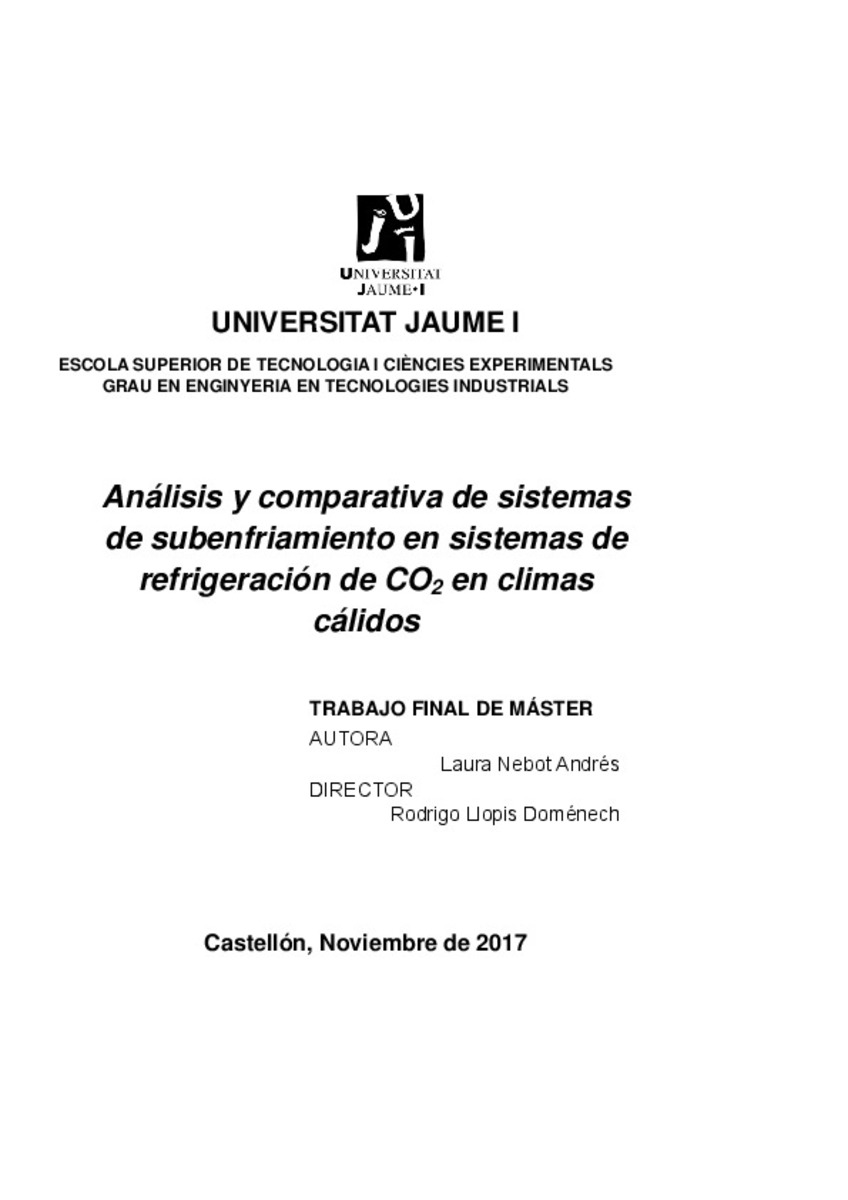Mostrar el registro sencillo del ítem
Análisis y comparativa de sistemas de subenfriamiento en sistemas de refrigeración de CO2 en climas cálidos
| dc.contributor.author | Nebot-Andres, Laura | |
| dc.contributor.other | Llopis Doménech, Rodrigo | |
| dc.contributor.other | Universitat Jaume I. Departament d'Enginyeria Mecànica i Construcció | |
| dc.date.accessioned | 2018-03-29T11:15:27Z | |
| dc.date.available | 2018-03-29T11:15:27Z | |
| dc.date.issued | 2017-10-27 | |
| dc.identifier.uri | http://hdl.handle.net/10234/173870 | |
| dc.description | Treball Final de Màster en Enginyeria Industrial. Codi: SJA020. Curs acadèmic 2016/2017 | ca_CA |
| dc.description.abstract | La refrigeración con ciclos de CO 2 simple está experimentando un fuerte cambio debido a las nuevas directivas europeas y los bajos rendimientos de estos sistemas en climas cálidos. Estudios teóricos y algunos ensayos experimentales apuntan al uso de ciclos de subenfriamiento mecánico para aumentar el rendimiento y la capacidad frigorífica de los ciclos base. En este trabajo se analizan el sistema de subenfriamiento mecánico dedicado y el sistema de subenfriamiento mecánico integrado desde una perspectiva teórica y experimental con el fin de evaluar sus prestaciones y cuantificar las mejoras energéticas que aportan. Primeramente ambos ciclos son estudiados teóricamente para luego dimensionar las instalaciones que permitan realizar los ensayos experimentales. Las simulaciones se realizan para el nivel de evaporación de 0ºC y para el de -10ºC; cubriendo un abanico de temperaturas ambiente comprendidas entre los 15ºC y los 40ºC. Además se analiza el comportamiento de ambos ciclos a lo largo de un año tipo en diferentes zonas climáticas y diferentes aplicaciones. Finalmente, el estudio de viabilidad muestra el interés de estas aplicaciones en climas cálidos y tamaños de planta elevados. | ca_CA |
| dc.description.abstract | The refrigeration with simple CO 2 cycles is undergoing a strong change due to the new European directives and the low performance of these systems in hot climates. Theoretical studies and some experimental trials point to the use of mechanical subcooling cycles to increase the performance and cooling capacity of the base cycles. In this paper, the dedicated mechanical subcooling cycle and the integrated mechanical subcooling cycle are analyzed from a theoretical and experimental view, in order to evaluate their performance and quantify the energy improvements they provide. Firstly, both cycles are studied theoretically, for then sizing and designing the plants in order to perform the experimental tests. The simulations are carried out for the evaporation levels of 0ºC and -10ºC, covering a range of ambient temperatures between 15ºC and 40ºC. In addition, the behavior of both cycles is analyzed over a year in different climatic zones and for different applications. Finally, the feasibility study shows the interest of these applications in hot climates and high plant sizes. | ca_CA |
| dc.format.extent | 146 p. | ca_CA |
| dc.format.mimetype | application/pdf | ca_CA |
| dc.language.iso | spa | ca_CA |
| dc.publisher | Universitat Jaume I | ca_CA |
| dc.rights | Attribution-NonCommercial-NoDerivatives 4.0 Internacional | * |
| dc.rights.uri | http://creativecommons.org/licenses/by-nc-nd/4.0/ | * |
| dc.subject | Màster Universitari en Enginyeria Industrial | ca_CA |
| dc.subject | Máster Universitario en Ingeniería Industrial | ca_CA |
| dc.subject | Master's Degree in Industrial Engineering | ca_CA |
| dc.title | Análisis y comparativa de sistemas de subenfriamiento en sistemas de refrigeración de CO2 en climas cálidos | ca_CA |
| dc.type | info:eu-repo/semantics/masterThesis | ca_CA |
| dc.educationLevel | Estudios de Postgrado | ca_CA |
| dc.rights.accessRights | info:eu-repo/semantics/openAccess | ca_CA |








